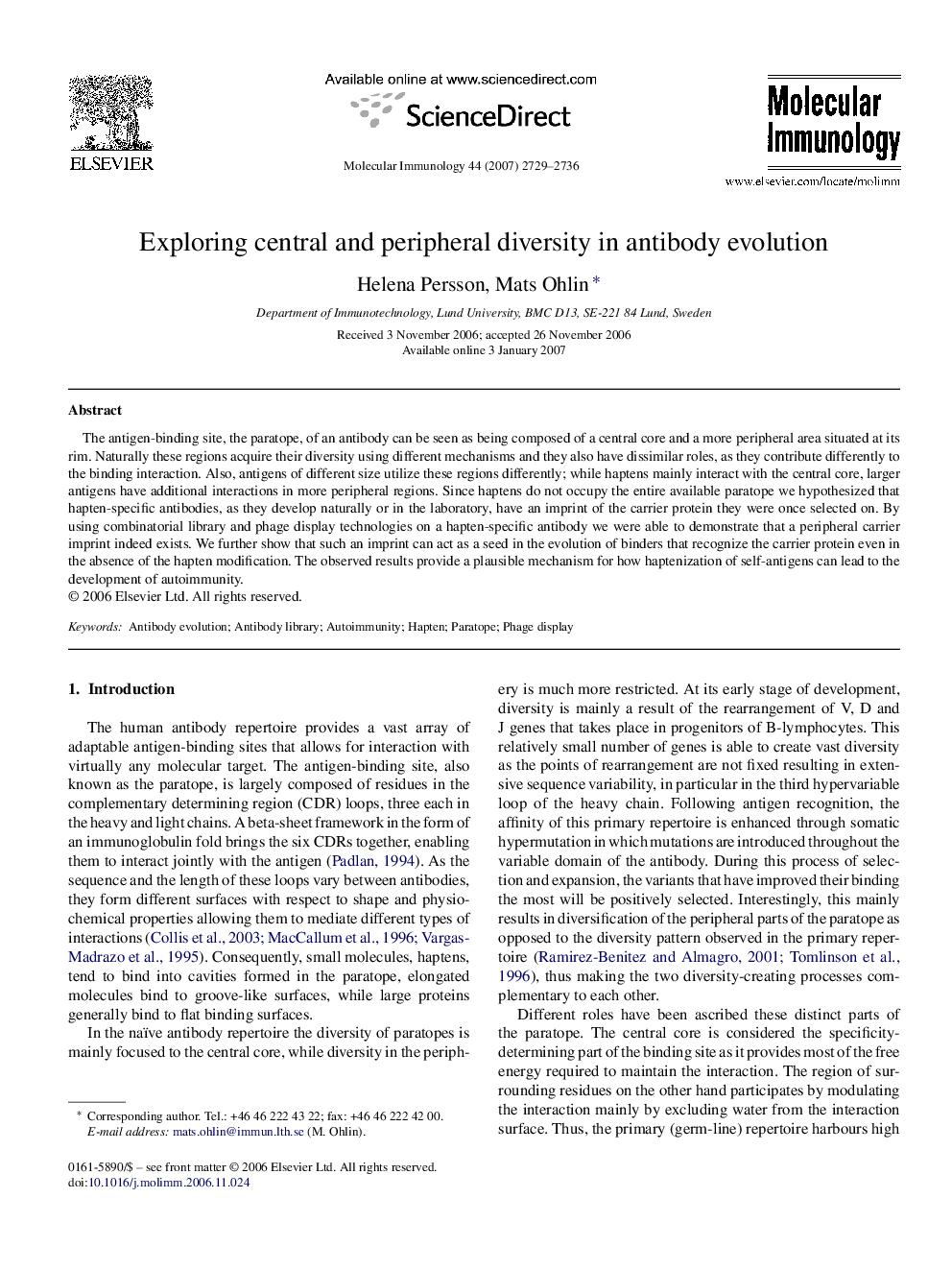| Article ID | Journal | Published Year | Pages | File Type |
|---|---|---|---|---|
| 5918185 | Molecular Immunology | 2007 | 8 Pages |
Abstract
The antigen-binding site, the paratope, of an antibody can be seen as being composed of a central core and a more peripheral area situated at its rim. Naturally these regions acquire their diversity using different mechanisms and they also have dissimilar roles, as they contribute differently to the binding interaction. Also, antigens of different size utilize these regions differently; while haptens mainly interact with the central core, larger antigens have additional interactions in more peripheral regions. Since haptens do not occupy the entire available paratope we hypothesized that hapten-specific antibodies, as they develop naturally or in the laboratory, have an imprint of the carrier protein they were once selected on. By using combinatorial library and phage display technologies on a hapten-specific antibody we were able to demonstrate that a peripheral carrier imprint indeed exists. We further show that such an imprint can act as a seed in the evolution of binders that recognize the carrier protein even in the absence of the hapten modification. The observed results provide a plausible mechanism for how haptenization of self-antigens can lead to the development of autoimmunity.
Related Topics
Life Sciences
Biochemistry, Genetics and Molecular Biology
Molecular Biology
Authors
Helena Persson, Mats Ohlin,
